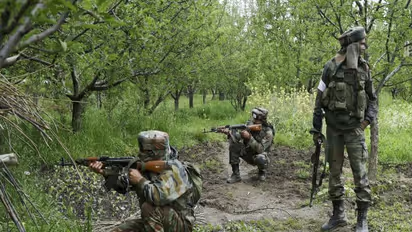
New Delhi: After 1,000 days of intense operations in the naxal-hit red zone, security forces have finally successfully managed to reduce the red terror incidents by almost 50%. According to the data compiled by the Ministry of Home Affairs (MHA), since 2015, there is a nosedive of the number of incidents by naxals in all states where red terror is active.
Naxals are so desperate to regain ground that they are now re-working on not only their strategy, but they have also started replacing their masters. Recently, the naxals have changed their general secretary Ganapathy. He was replaced by his second-in-command Nambala Keshava Rao, alias Basavaraju, who is mainly involved in operations. Security officials deployed in naxal-hit area claim that they are in the process of revamping their strategy after making multiple failed attempts.
According to the CRPF officers - who spend day and night fighting the naxals - in the last three years, operations have been intensified. Latest weapons, equipment etc., have been purchased which has helped the forces to deal with the naxals.
The major reason for the naxals’ network shrinking is that the locals have started refusing to work with them. Locals, who were their backbone have started giving important tip-offs to security forces, and the forces are now defusing their plans.
“The growth of the naxals were only based on their local support. Here, the villagers used to help them in hiding, giving information about the forces’ movements; but now, they have also started boycotting them. This is the reason why the naxals are now targeting more civilians in Chhattisgarh.
According to the data compiled by the MHA, there is a rise of more than 25% of the number of civilians killed by naxals. In 2017, a total of 70 civilians were killed, which has gone up to 89 till November 15. The situation in Chhattisgarh’s red-zone area is worst. Areas like Bijapur, Sukma, Dantewada, Bastar are most hit by naxals. According to the Ministry of Home Affairs, till November 15, eleven personnel of the security forces were killed in Dantewada district.
The maximum number of fatalities have been reported in Chhattisgarh, followed by Jharkhand and Bihar. These states have seen almost a 20% dip in number of deaths this year compared to that of last year.
Paramilitary forces have been provided with helicopters for logistic support, troop movement, medical supplies, and casualty evacuation. But there is no use of air firepower as envisaged in anti-LWE operations. Also, red zone areas have been given extra forces, UAVs, construction of fortified police stations, arms and equipment, training assistance to counter naxalism.
The government is claiming that more than 3,200 naxals have surrendered in the past three years. According to the MHA, the government has a comprehensive ‘Surrender-cum-Rehabilitation Scheme of Left Wing Extremists in the affected States’ to allow Left-wing extremists to return to the mainstream. In addition, states also have their own respective surrender policies for encouraging surrenders by LWE cadres.
The government has approved the Special Central Assistance Scheme which envisages an outlay of Rs 1,000 crore per annum for three years for the most affected LWE districts.